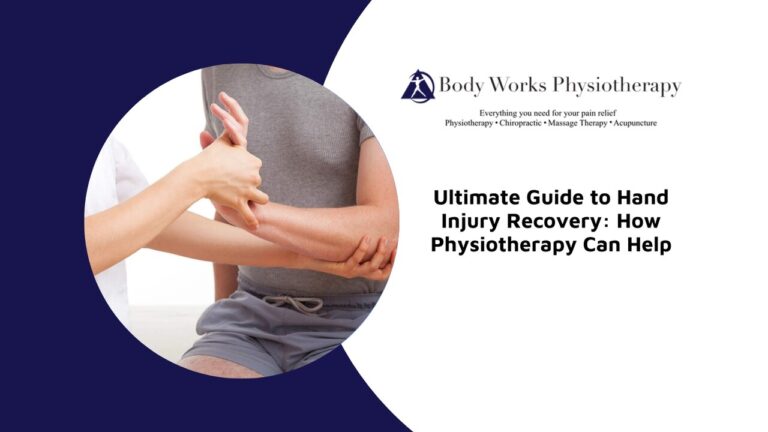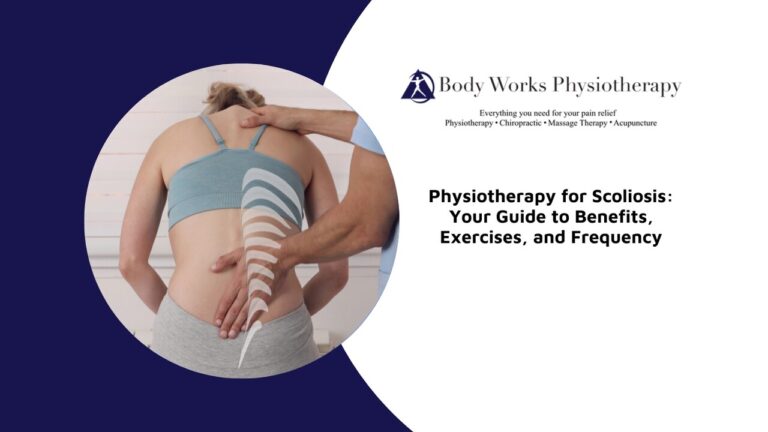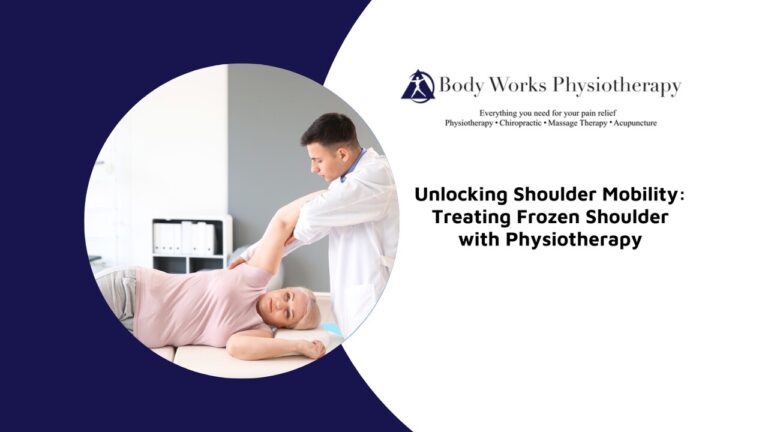
Fibromyalgia is a chronic condition that affects millions of people, causing widespread pain, fatigue, and a range of other debilitating symptoms. For those living with fibromyalgia, managing the condition can be a daily challenge. Fortunately, physiotherapy offers a path to relief. In this blog, we’ll explore how physiotherapy can help manage fibromyalgia symptoms and what treatments are most effective for those dealing with this complex condition.
Understanding Fibromyalgia: Causes, Symptoms, and Impact
Fibromyalgia is a complex condition characterized by widespread musculoskeletal pain, fatigue, and tenderness. Unlike other pain conditions, fibromyalgia doesn’t stem from inflammation or tissue damage but is thought to be related to how the brain processes pain signals. The exact cause remains unclear, but it likely involves a mix of genetic, environmental, and psychological factors. Triggers may include physical trauma, infections, or significant psychological stress, with a genetic predisposition playing a role.
Symptoms include widespread pain, chronic fatigue, cognitive difficulties often referred to as “fibro fog,” and heightened sensitivity in specific areas known as tender points. Many individuals with fibromyalgia also experience digestive issues like irritable bowel syndrome and mood disorders such as anxiety and depression.
Fibromyalgia can significantly impact daily life, making it challenging to perform everyday activities, maintain employment, and engage in social interactions. The condition often leads to feelings of frustration and emotional distress. While there is no cure, treatments like physiotherapy can help manage symptoms and improve quality of life. Understanding fibromyalgia is crucial for those affected, as it opens the door to effective symptom management and support.
Benefits of Physiotherapy for Managing Fibromyalgia Symptoms
Physiotherapy plays a crucial role in the management of fibromyalgia. Benefits include:
- Pain Relief: One of the primary benefits of physiotherapy for fibromyalgia is its ability to alleviate pain. Techniques such as manual therapy, gentle stretching, and therapeutic exercises are designed to reduce muscle tension, improve blood circulation, and decrease the intensity of pain. By focusing on the specific areas of discomfort, physiotherapy can provide targeted relief that helps manage the chronic pain associated with fibromyalgia.
- Improved Mobility: Fibromyalgia often leads to stiffness and a reduced range of motion, making daily activities challenging. Physiotherapy addresses this by incorporating exercises that enhance flexibility and joint mobility. Regular physiotherapy sessions can help increase the range of motion in affected areas, making it easier to perform everyday tasks and maintain an active lifestyle. Improved mobility also contributes to better posture, which can alleviate secondary pain caused by poor alignment.
- Enhance Overall Well-being: Beyond physical improvements, physiotherapy plays a significant role in enhancing overall well-being. The relaxation and stress-relief benefits of physiotherapy can help reduce the mental and emotional strain associated with chronic pain. Techniques such as deep breathing exercises, mindfulness, and relaxation training, often integrated into physiotherapy sessions, promote a sense of calm and well-being. This holistic approach helps individuals manage not only the physical symptoms but also the psychological impact of fibromyalgia.
- Personalized Treatment Plans: A skilled physiotherapist or physiotherapist can develop a personalized treatment plan tailored to your specific symptoms of fibromyalgia. This individualized approach ensures that each person’s unique needs are addressed, whether the focus is on pain relief, improving mobility, or enhancing overall well-being.
Effective Physiotherapy Treatments for Fibromyalgia
The treatment of fibromyalgia through physiotherapy often includes a combination of a variety of treatments:
- Manual Therapy: Manual therapy, such as soft tissue massage therapy, can help alleviate muscle pain and tension. This hands-on technique involves manipulating the muscles and soft tissues to improve blood flow, reduce muscle spasms, and release tight knots. Manual therapy is particularly beneficial for targeting areas of chronic pain, helping to alleviate discomfort and improve overall muscle function.
- Aerobic Exercise: Aerobic exercises, like walking or swimming, are highly effective in improving cardiovascular health and reducing musculoskeletal pain. These low-impact activities increase blood flow, enhance oxygen delivery to tissues, and promote the release of endorphins, the body’s natural painkillers.
- Strengthening Exercises: Strengthening exercises are essential for building muscle support and reducing overall musculoskeletal pain. By focusing on specific muscle groups, these exercises help increase strength, stability, and endurance. Stronger muscles provide better support for the joints, reducing the strain on the body and minimizing the risk of injury.
- Stretching Exercises: Stretching exercises are crucial for reducing stiffness and increasing flexibility, two common issues in fibromyalgia. These exercises focus on gently elongating the muscles, improving their elasticity, and enhancing the range of motion in joints. Regular stretching can prevent muscle contractures, improve circulation, and reduce the risk of injuries.
- Acupuncture: Acupuncture is a complementary treatment that can be integrated into physiotherapy for fibromyalgia. This technique involves inserting thin needles into specific points on the body to stimulate the nervous system and promote natural pain relief. Acupuncture is believed to release endorphins, reduce inflammation, and improve energy flow within the body.
- Shockwave Therapy: Shockwave therapy is a non-invasive treatment that uses high-energy sound waves to stimulate repair in damaged tissues. This therapy is particularly effective for addressing chronic pain and tendon-related issues. In the context of fibromyalgia, shockwave therapy can help reduce muscle tightness, improve circulation, and promote tissue regeneration.
- Client Education: A physiotherapist may also incorporate education into the treatment plan to empower you to take control of your condition and improve your quality of life. Education includes teaching you about the nature of fibromyalgia, how to manage symptoms effectively, and strategies for maintaining long-term well-being.
Recommended Stretches and Exercises for Fibromyalgia Relief
Stretching and strengthening exercises are highly recommended for those living with fibromyalgia. Stretching exercises focus on reducing muscle tension and improving flexibility, which can help relieve pain and stiffness. Strengthening exercises should be included in your exercise regimen to help build muscle support and reduce overall musculoskeletal pain.
A physiotherapist can guide you through a safe and effective exercise program that suits your individual needs. Examples of exercises your physiotherapist may recommend include:
- Hamstring Stretch: Sit with one leg extended and the other bent inward. Reach towards the toes of the extended leg, keeping your back straight. Hold for 15-30 seconds, then switch legs. This stretch helps ease lower back and hamstring tension.
- Cat-Cow Stretch: Start on hands and knees. Inhale to arch your back (Cow Pose), exhale to round it (Cat Pose). Repeat for 1-2 minutes. This flow improves spinal flexibility and relieves back and neck tension.
- Shoulder Rolls: Sit or stand straight and roll your shoulders forward, then backward, in a circular motion for 10-15 seconds each. This exercise reduces neck and shoulder tension.
- Wall Push-Ups: Stand facing a wall, hands at shoulder height. Bend your elbows to bring your chest towards the wall, then push back. Perform 10-15 repetitions. This strengthens the upper body gently.
- Pelvic Tilts: Lie on your back with knees bent. Press your lower back into the floor, tilting your pelvis upward, then release. Repeat 10-15 times. This strengthens the lower back and abdominals.
- Leg Raises: Lie on your back, one leg bent, one straight. Lift the straight leg a few inches, hold, then lower. Perform 10-15 repetitions on each side. This strengthens the hip flexors and thighs.
How Often Should Fibromyalgia Sufferers Undergo Physiotherapy?
For optimal results in managing fibromyalgia, it is generally recommended to have physiotherapy sessions one to two times per week, depending on the severity of your symptoms and your overall treatment plan.
Consistency is key, as regular sessions with a physiotherapist can help maintain pain relief, improve flexibility, and enhance your quality of life. Over time, the frequency of sessions may be adjusted based on your progress and the management of fibromyalgia symptoms.
Your physiotherapist will work with you to create a schedule that best fits your needs, helping you take control of your fibromyalgia and live a more comfortable life.
Essential Lifestyle Changes to Complement Physiotherapy for Fibromyalgia
Managing fibromyalgia requires a comprehensive approach that goes beyond physiotherapy sessions. Incorporating essential lifestyle changes can enhance the effectiveness of your treatment, helping you better manage symptoms and improve your overall quality of life. Here are some key lifestyle adjustments to complement your physiotherapy plan:
- Regular Exercise: Low-impact exercises like walking, swimming, or gentle yoga are crucial for improving muscle strength and flexibility. Regular physical activity also boosts endorphins, which help relieve pain and improve sleep quality.
- Stress Management: Reducing stress is vital for managing fibromyalgia symptoms. Techniques like deep breathing, meditation, and mindfulness can help lower stress levels and promote relaxation.
- Adequate Sleep: Quality sleep aids muscle recovery and reduces fatigue. Establish a consistent sleep routine, create a calming environment, and avoid screens before bedtime to improve sleep quality.
- Pacing and Energy Conservation: Balance activity with rest to avoid flare-ups. Break tasks into manageable steps and take regular breaks to maintain steady energy levels throughout the day.
- Hydration: Staying hydrated helps manage fibromyalgia symptoms. Drink plenty of water daily to keep muscles and joints lubricated and reduce fatigue.
- Social Support: A strong support system is essential for emotional well-being. Connect with others who understand your condition through support groups, online communities, or close friends and family.
- Mind-Body Practices: Practices like tai chi or gentle stretching can improve flexibility, reduce pain, and enhance mental well-being by promoting relaxation and stress reduction.
Pain-Free Living Starts Here
Living with fibromyalgia can be overwhelming, but you don’t have to face it alone. Physiotherapy offers a personalized approach to managing your symptoms, helping you regain control over your body and your life. At Body Works Physiotherapy in Scarborough, our experienced physiotherapists are dedicated to developing tailored treatment plans that address your specific needs. Whether you’re struggling with chronic pain, fatigue, or muscle stiffness, we are here to support you every step of the way. Don’t let fibromyalgia hold you back—book your appointment today and take the first step towards a more comfortable and fulfilling life.




